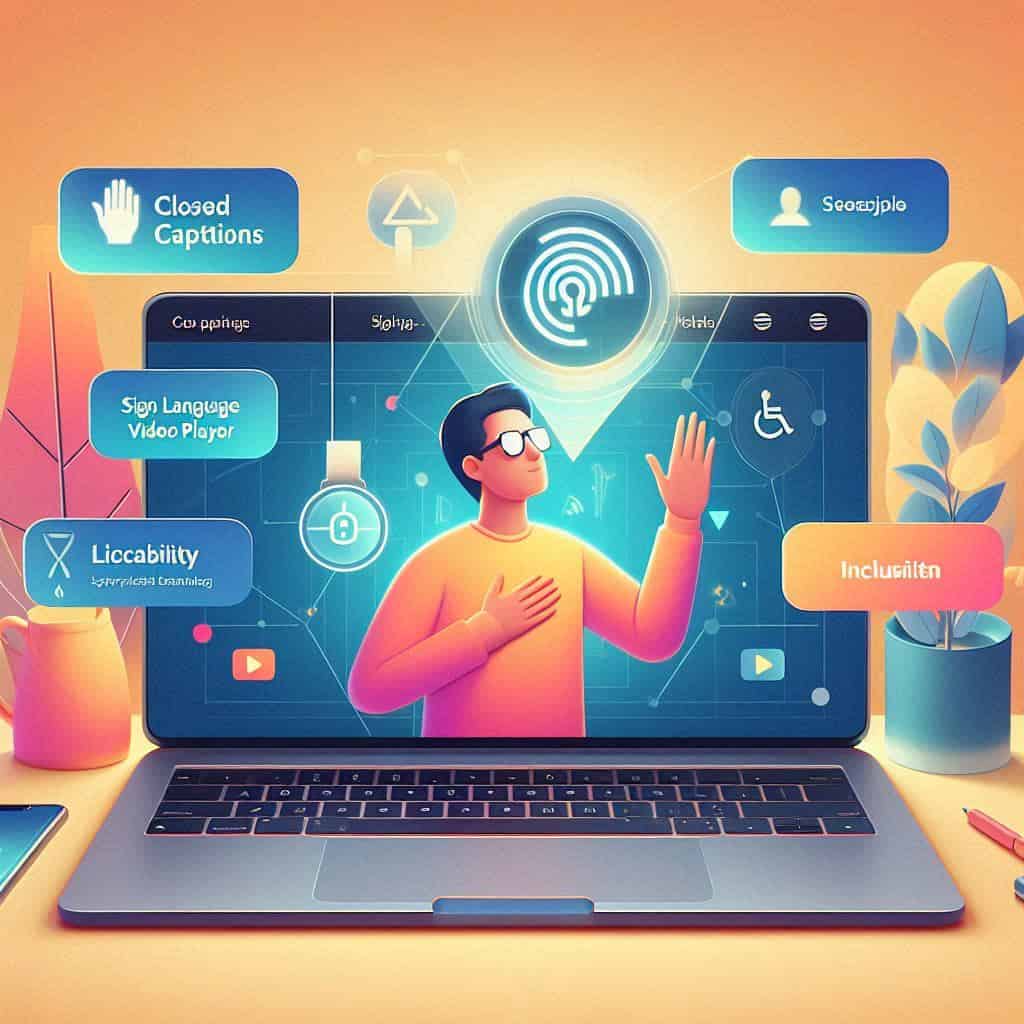
How to Use Technology to Create Accessible Deaf-Friendly Websites
- Posted by Cicada Sign
- Categories Blog
- Date October 8, 2024
- Comments 0 comment
In today’s increasingly digital world, accessibility is no longer a luxury—it’s a necessity. For Deaf and Hard of Hearing (HoH) users, an accessible website can mean the difference between full participation in the digital landscape and exclusion from critical resources. Implementing Deaf-friendly web design is essential for businesses and organizations seeking to offer inclusive experiences for all users. Here’s how technology can be used to create an accessible and Deaf-friendly website.
Why Website Accessibility Matters
The Internet plays a vital role in education, business, and communication for Deaf and HoH individuals. Despite advancements in web design, many websites fail to provide adequate access for these communities. Websites with audio-only content, poorly captioned videos, or an absence of visual language cues limit the experience and utility of the internet for Deaf users.
Making websites accessible involves going beyond traditional accessibility measures. It means addressing the specific needs of Deaf and HoH users, creating inclusive spaces where everyone can navigate, interact, and benefit.
Key Technologies to Build a Deaf-Friendly Website
Captioning and Transcription Tools
Providing accurate captions and transcriptions for video and audio content is the first step toward inclusivity. Closed captions can make video content understandable to Deaf users, while text transcriptions of podcasts or audio recordings ensure that no one is left behind.
- Tools like Otter.ai and Rev offer real-time transcription services.
- Platforms like YouTube and Vimeo allow users to upload captions for videos.
Websites should incorporate media players that support captions and offer easy toggling of on-screen text. Always make sure the captions are editable for accuracy and available in multiple languages if possible.
Sign Language Video Integration
For many Deaf users, American Sign Language (ASL) or another regional sign language is their primary mode of communication. Incorporating ASL videos alongside written content helps bridge the gap between spoken/written language and sign language.
- SignAll is a promising technology that converts sign language into text, helping users communicate more effectively.
- Deaf AI offers tools that assist in interpreting and creating sign language video translations for web content.
Using a human interpreter for sign language videos can further ensure accuracy and cultural sensitivity.
AI-Powered Chatbots with Sign Language
Artificial intelligence is revolutionizing web accessibility. AI-powered chatbots can enhance user experiences by offering instant support in multiple formats, including sign language. Chatbots equipped with video-based communication in sign language can help Deaf users interact with websites seamlessly.
- Signly and XRAI Glass are two technologies leading the way in making AI-powered chat services more accessible for Deaf users.
Visual Alerts and Notifications
Many websites rely on auditory cues, such as sound notifications for new messages or alerts. These need to be adapted for Deaf users by incorporating visual alternatives, such as pop-up notifications or on-screen prompts.
- Programs like BeAware offer customizable notifications for important events, enabling Deaf users to stay connected through visual alerts.
Additionally, ensure that any emergency alerts or important announcements on the website are communicated through multiple modalities, including visual and text-based cues.
User-Centered Design for Easy Navigation
For Deaf and HoH individuals, website accessibility also includes simple and intuitive navigation. Make sure your website follows WCAG 2.1 guidelines (Web Content Accessibility Guidelines) for clear and logical content organization, easy-to-use navigation menus, and accessible buttons. Offering keyboard navigation as well as voice-over options helps make the site more navigable for all users, regardless of hearing ability.
The Importance of Inclusive Content
When creating content for a Deaf-friendly website, keep in mind that visual and linguistic accessibility go hand in hand. Sign language videos, accurate captions, and written content should always align to provide a comprehensive experience. Don’t forget that culturally sensitive and respectful language matters—include content that recognizes and respects Deaf culture.
Conclusion: Empowering the Deaf Community Through Accessible Websites
Incorporating accessibility measures on your website for Deaf and HoH users is not only a legal responsibility but also an opportunity to serve a broader audience and improve the overall user experience. By using tools like AI-powered chatbots, captioning services, and intuitive design, you can ensure your website offers equitable access to all users.
At Cicada Sign, we believe that the digital world should be open to everyone, and we’re committed to building tools and solutions that empower the Deaf community. By embracing technology, we can help create a more inclusive and accessible internet, one website at a time.

I Letter in ASL
"Incorporating accessibility measures on your website for Deaf and HoH users is not only a legal responsibility but also an opportunity to improve the overall user experience for everyone."

"By using tools like AI-powered chatbots, captioning services, and intuitive design, you can ensure your website offers equitable access to all users."



